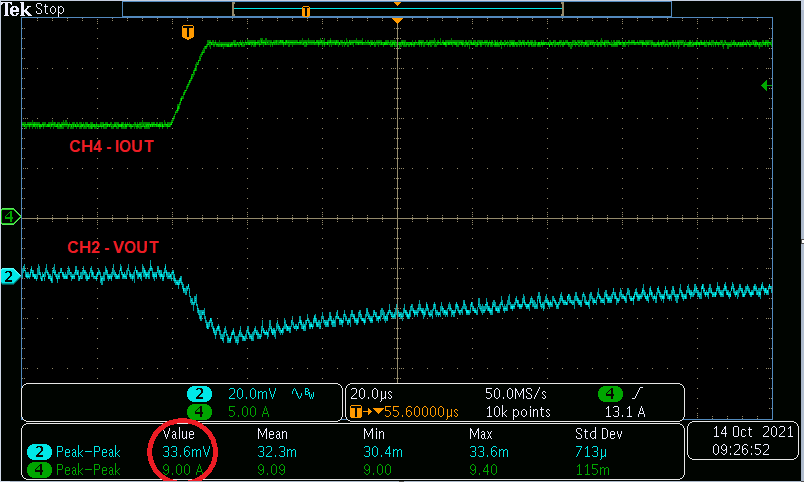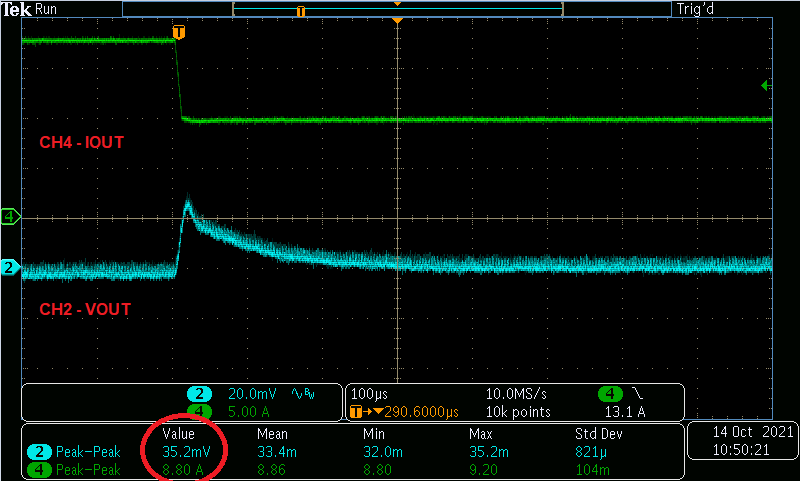SLVUC73B January 2022 – February 2024 TPS7H4003-SEP
4.4 Transient Response to Positive and Negative Load Step (9A to 18A to 9A)
- Configure e-load to switch between 9A and 18A at a rate of 1A/µs.
- On oscilloscope, display CH2 (VOUT)
[AC coupled, 20mV/div] and CH4 (Output Current Probe) [5A/div, trigger rising
edge ≈12A] with 40µs/div.
Figure 4-4 shows the response to this load step to be less than 35mV or –3.5%.
 Figure 4-4 Transient Response to
Load Step 9A to 18A at 1A/µs
Figure 4-4 Transient Response to
Load Step 9A to 18A at 1A/µs - Change the
trigger on CH4 to falling edge to capture the transient response of VOUT to
negative current step from 18A to 9A as shown in Figure 4-5.
 Figure 4-5 Transient Response to
Load Step 18A to 9A at 1A/µs
Figure 4-5 Transient Response to
Load Step 18A to 9A at 1A/µs